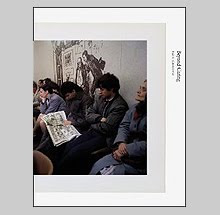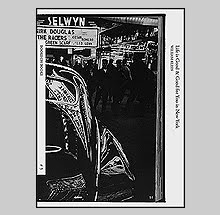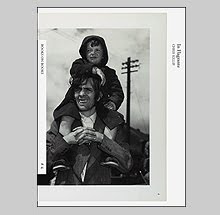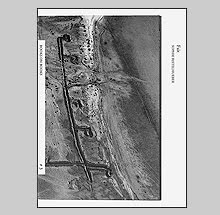The American War by Harrell Fletcher
Harrell Fletcher, while on a month long artist retreat, visited the
What was interesting to Fletcher and in turn us, is that these images served as a key to understanding how the “other side” saw the American involvement in
The captions to the photographs in no way mask the message of victimization of
For instance, one of the more brutal and grotesque images shows an American soldier holding up the torn and mangled remains of an almost unrecognizable body. The caption from the museum states:
“The American soldier laughed satisfactorily while carrying a part of the body of a liberation soldier just being hit by shells from a grenade-launcher. In my feelings I wondered whether he could have been a monster or a human being? In 1967. Infantry Division 25. In
The mouth on the soldier looks perhaps like a smile or could easily be a strained grimace at what he has just lifted up from the ground. Photography has ways of making yawns look like screams after all. So I cannot trust the picture to reveal the truth and I cannot trust the caption to reveal the truth either. What I have to rely on is the fact that the act of picking up the shredded remains of that human being is unthinkable to me. That is what sways me to see a complete monster as the caption writer does. But was he picking up the remains to participate in being photographed (monstrous thought, but it is unclear that he knows a picture was being made) or was he in shock at the sights of destruction and thus able to grossly perform acts like picking up the body (less monstrous and now seems more like he is a victim)?
I am not trying to dampen the content of the photographs and doubt the argument of brutality inflicted by Americans. Our history is rife with examples. I am responding to these documents like any others that happen to be photographs. It is a much more complex act than it seems, looking at photographs.
The work also raises the issue of memory and photography’s role in what gets remembered collectively. Those of us who only experienced
Fletcher’s intention seems to be not to appropriate the images but to appropriate the entire museum and re-present it to American eyes to experience. In an article on this work that was in the journal Afterfall, Arthur Ou, relates Harrell’s project as a new kind of cultural “bootlegging.” Much in the same way that movies are poorly video taped off cinema screens (complete with audience sounds and visuals) and sold on the streets in any major city. Fletcher’s technique for re-photographing the pictures in the museum was to shoot at angles to purposely avoid the glare from the flash of his point and shoot camera. So looking at the images, there is always the sense of an intermediary present as a guide. This is a much different experience than in a stack of the same images were scanned and displayed in the book in a more traditional way.
The book The American War presents the material in a straightforward way. The first few pages reproduce the brochure from the museum from cover to cover and the rest of the book is selections from the museum, re-presented. A short one page artist statement is at the end. All of J and L’s titles are very hip in their design. Not in an annoying way, just cool and very calculated, taking the entire look and feel of the book into consideration. Jason Fulford and Leanne Shapton, (the J and L of J and L) besides being fine artists in their own right, are both great designers and their books reflect that. The last fine detail is that the book retails for only $15.00.

Book Available Here (The American War)
Buy online at J and L Books












